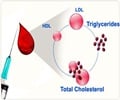
‘First cousins who got married to each other did not have the gene APOC3, which regulates the metabolism of triglyceride-rich lipoproteins in the blood.’
Tweet it Now
The program, which has so far sequenced the protein-coding regions of over 10,500 adults living in Pakistan, is illuminating the basic biology and possible therapeutics for several different disorders. The team has identified more than 1,300 genes completely knocked out in at least one individual. They first turned their attention for deeper analysis to genes involved in cardiovascular and metabolic diseases.
One gene in particular, APOC3, which regulates the metabolism of triglyceride-rich lipoproteins in the blood, was missing in several dozen individuals in a small fishing village on the coast of Pakistan where first-cousin marriages are culturally prevalent.
These APOC3-knockout individuals had very low triglyceride levels. The researchers challenged their system with a high-fat meal. Compared with family members who were not APOC3 knockouts, the APOC3 knockout family members did not have the usual post-meal rise in plasma triglycerides.
"These are the world's first APOC3 human knockouts that have been identified," said co-first author Danish Saleheen.
Advertisement
"The Human Genome Project gave us a 'parts' list of 18,000 genes. We are now trying to understand gene function by studying people who naturally lack a 'part,'" said co-senior author Sekar Kathiresan.
Advertisement
"The project highlights the value of looking at diverse populations, particularly for genetic analyses, you'll find variants in one ethnicity and not another," said co-first author Pradeep Natarajan. The study is published in Nature.
Source-ANI














